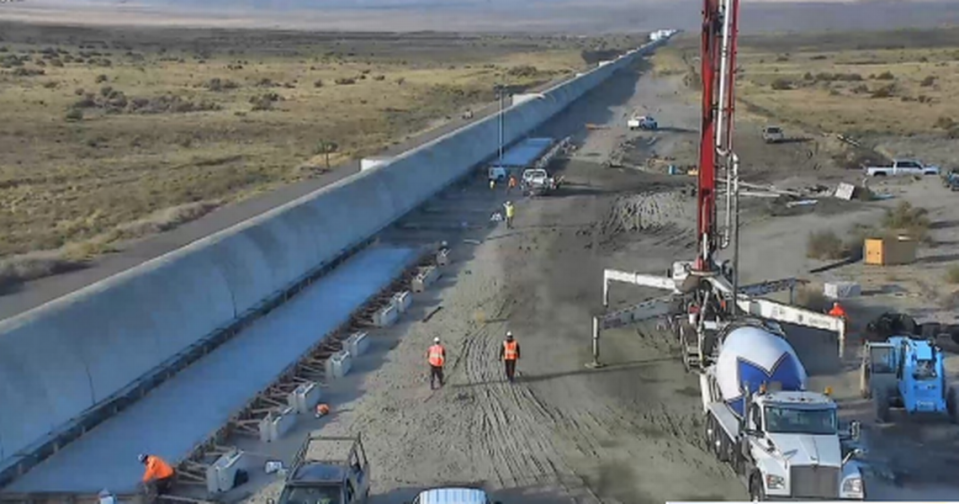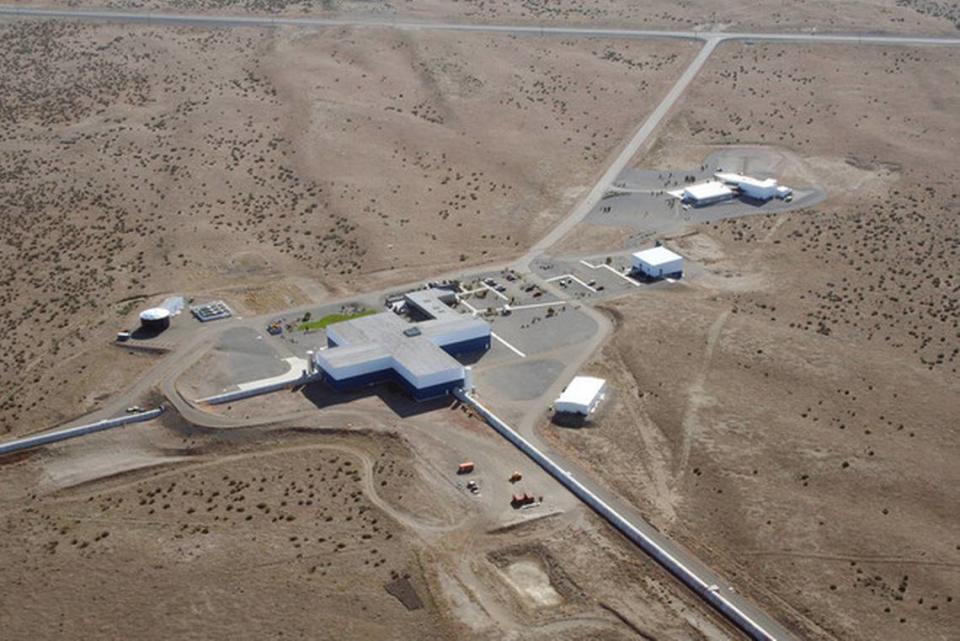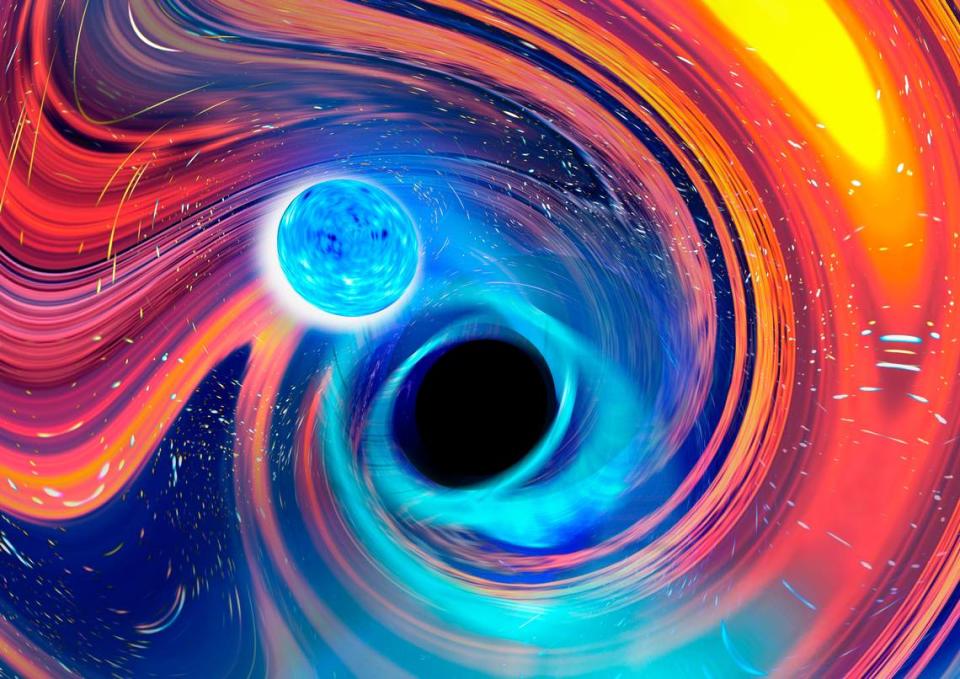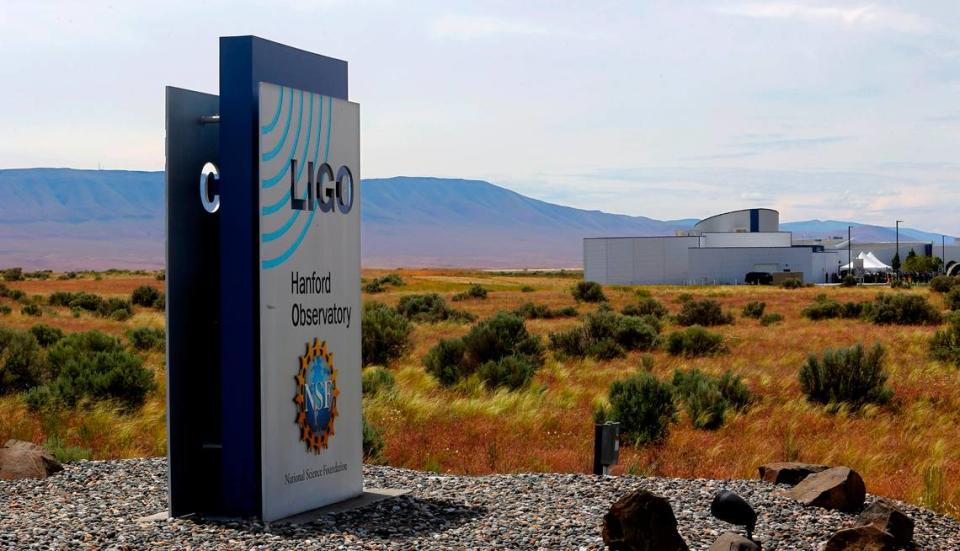Learn about gravitational waves and how a Tri-Cities observatory spots the ripples in space
- Oops!Something went wrong.Please try again later.
Using a unique scientific facility at Hanford, scientists have opened an exciting new field of astronomy and confirmed the existence of gravitational waves in the universe first predicted by Albert Einstein.
On Thursday, April 18, at noon, the Columbia Basin Badger Club will present an online forum about the LIGO Hanford Observatory featuring its head, Caltech physicist Dr. Michael Landry.
His talk, “Eddies in a Cosmic Ocean,” will review the basics of gravitational waves: what they are, what makes them, and how they’re detected by the giant 2.5 mile-long, L-shaped LIGO instruments.
He will also describe a future, 25-mile-long detector called Cosmic Explorer.

Gravitational waves were first predicted in 1916 by Einstein, who was trying to understand how gravity moves about the cosmos. His answer?
Accelerations of matter stir up space and time to create ripples in the very fabric of the universe: space-time.
Gravitational waves from the collision of two black holes were first detected in 2015 by the twin LIGO detectors in Richland and Livingston, LA.
The facilities, funded by the U.S. National Science Foundation, use the pair of large-scale laser interferometers to detect minute expansions and contractions of the 2.5-mile arms caused by a passing gravitational wave.
The effect typically changes the length of the arms by about one-thousandth the width of a proton.

The 2017 Nobel Prize in Physics was awarded to LIGO founders Barry Barish and Kip Thorne of Caltech and Rainer Wess of MIT) for the first discovery of gravitational waves from collisions of black holes.
These collisions are the most powerful astronomical events known to humans, briefly outshining all the stars in the known universe. Except instead of releasing light, they cause space and time to recoil and shudder.

LIGO now works with other gravitational-wave observatories around the world including Virgo, in Italy, and KAGRA, in Japan.
LIGO India is expected to come online in the early 2030s. Gravitational-wave astronomy is big science that comprises 1,600 researchers around the world, about half of whom are in the US.
The LIGO Exploration Center or LExC (sounds like “Lexi”) is a Washington state-funded outreach center at the Richland observatory, aimed at K-12 students and the general public.
LExC houses an exhibit hall with fun, inquiry-based exhibits that cover the broad scope of LIGO science, engineering, and technology, as well as highlighting STEM and STEM-adjacent careers at the observatory.

LIGO holds public tours of the LExC and laboratory on the second Saturday of each month, and is open for drop-in visitors.
To register for this event, which will include a Q&A session, go to columbiabasinbadgers.com to receive a confirmation and links to join the Zoom forum and a half-hour “Table Talk” open-mic session afterward.
Cost is $5 for nonmembers and free for club members.

